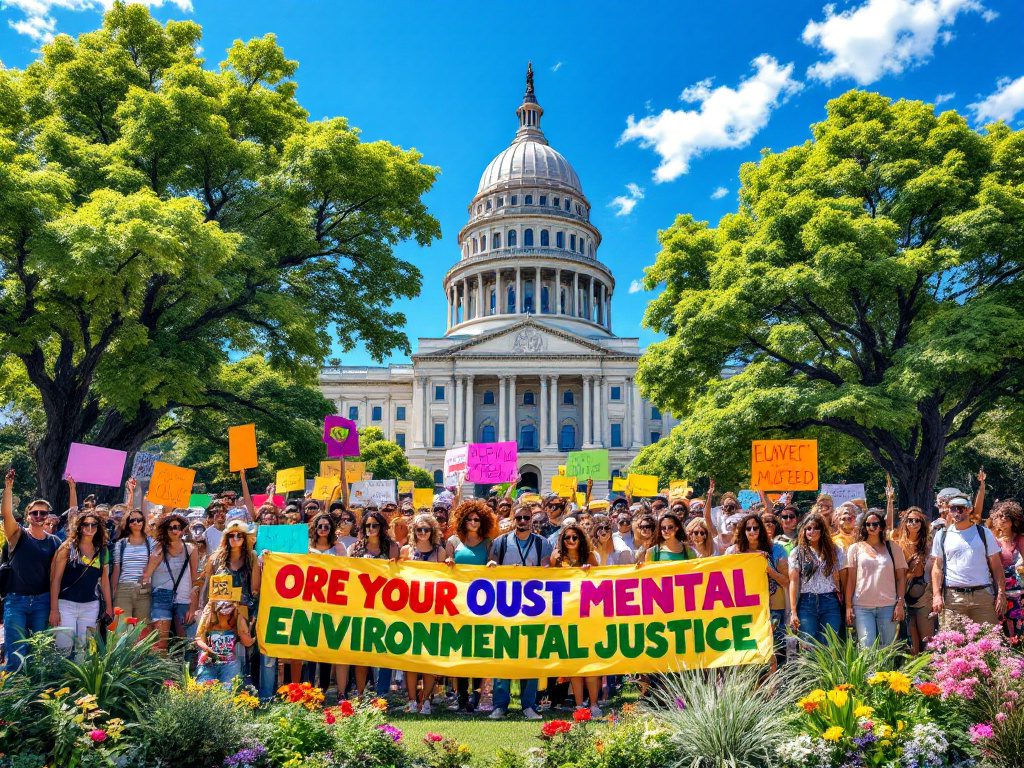The Urgency of Protecting Minnesota’s Natural Gifts
On a crisp spring afternoon, more than a hundred adults, students, hunters, anglers, and advocates gathered at the Minnesota State Capitol steps, not just to commemorate Earth Day but to issue a clarion call for protecting the state’s most precious assets: its wild lands, pristine waters, and public spaces. These rallies—echoed in Duluth and mirrored by similar gatherings across the country—were less of a celebration and more of a battle cry. The vibrant sign-making stations in front of the Capitol, the passionate speeches, and the collective chants for ecological accountability made it clear: Minnesotans are refusing to remain silent as industrial interests and legislative loopholes threaten generational environmental progress.
Among the crowd, stickers reading “Protect the BWCA” and “No PFAS Exemptions” caught the light. The Boundary Waters Canoe Area Wilderness (BWCA)—one of America’s most visited wildernesses—has become Minnesota’s frontline in the ongoing national debate over the future of public lands. Chris Knopf, executive director of Friends of the Boundary Waters, sounded the alarm about new legislation that would not only reissue cancelled mineral leases within the Superior National Forest but also expedite the environmental review process for mining operations. On its face, the bill’s supporters claim it targets U.S. dependency on Chinese minerals. But beneath the political veneer, many see it as prioritizing corporate gain over irreplaceable habitats—risking contamination to the BWCA’s delicate ecosystem.
What makes this all so personal for Minnesotans isn’t just nostalgia for childhood canoe trips or pride in the state’s storied environmental legacy. It’s a recognition that these natural resources define Minnesota’s identity. Decades of bipartisan stewardship are now at a crossroads. According to conservationist Barb Huberty, “We stand to lose decades of investment in clean water if policymakers ignore scientific consensus and favor short-term profit.”
Legislative Loopholes and the Fight to Ban ‘Forever Chemicals’
No topic stirred more outrage among ralliers than Minnesota’s recently enacted PFAS (per- and polyfluoroalkyl substances) ban. Often dubbed “forever chemicals,” PFAS have been linked to cancer, immune system harm, and reproductive issues. The original state law was designed to be among the country’s toughest, targeting these persistent pollutants in consumer products. Now, lobbyists have fashioned a set of carve-outs that undermine the law’s potency. Exemptions for internal product components, firefighting foams in airport hangars, and even children’s electric bikes threaten to erode hard-won protections.
This is not just a regulatory argument; it’s a question of public trust. As pointed out by local advocate Dana Tomes at the Capitol rally, every exemption “chips away at our commitment to public health.” The experience is familiar to those who have watched major environmental legislation get watered down once loud, well-financed interests get involved. Harvard environmental policy professor Lila Ramos has warned, “Industry will always fight for loopholes. The job of legislators is to serve the public interest, not the highest bidder.”
Meanwhile, student voices rang loudly through the halls of both the Capitol and Duluth rallies. The Duluth Climate Club, a group of high school students, recently persuaded their school district to adopt a sweeping climate action plan. Their activism secured a $28 million Solar for Schools grant and funding for a solar array on a local high school rooftop. For them, environmental justice is a lived experience—not an abstract future threat. As senior club leader Emma Swenson said, “If lawmakers can’t act for our future, then we’ll have to do it for ourselves.” Their efforts are a testament to the growing influence of youth-led grassroots movements even as political debates stall at higher levels.
“The job of legislators is to serve the public interest, not the highest bidder.” — Prof. Lila Ramos, Harvard
Science Under Threat and the Role We All Play
Sign after sign in Duluth’s Leif Erikson Park bore the slogan “Thank a Scientist”—a nod to the embattled EPA water research lab whose future now hangs in the balance. The Environmental Protection Agency’s research arm in Duluth plays a critical role in safeguarding Lake Superior and regional waterways, ensuring that policy rests on rigorous, independent data. Yet proposals out of Washington would eliminate much of this scientific capacity just when Minnesotans need it most. The loss would not be felt in spreadsheets or budgets, but in diminished water quality and increased threat to public health and wildlife.
How did we reach a point where evidence-based regulation is itself endangered? Decades of anti-intellectual rhetoric, fueled by conservative lawmakers and industry-backed think tanks, have turned ‘regulation’ into a dirty word. But history offers a stark warning. The Clean Water Act and the establishment of the EPA in the 1970s were landmark victories, forged because people demanded that science—not profit—guide environmental protection. Without vigilance, those hard-won gains can and will be rolled back. As Barb Huberty reminded the crowd, “Losing these safeguards would betray the investments of generations.”
Recent Pew Research Center surveys show broad public support for stronger environmental protections, with a majority of Americans favoring stricter laws even if it means more regulation on industry. Policymakers who argue for fast-tracking mining operations or watering down PFAS regulations fly in the face of both expert advice and public will. In this ongoing fight, every Minnesotan—hiker, angler, teacher, scientist, or student—has a role to play. Each rally, letter to the editor, or conversation with a legislator moves the needle toward a future where environmental justice is non-negotiable.
The Capitol rally’s after-party at a local brewery was more than social hour; it was an act of community-building, a recognition that activism can be joyful as well as urgent. With environmental threats growing and political gridlock thickening, solidarity and shared commitment are our best tools. The message echoing from the steps of the Capitol to the shores of Lake Superior is clear: Minnesotans have no intention of letting industry or political inertia define the fate of their wild places. The fight continues—and as history has shown, when people mobilize for the environment, progress is possible.

